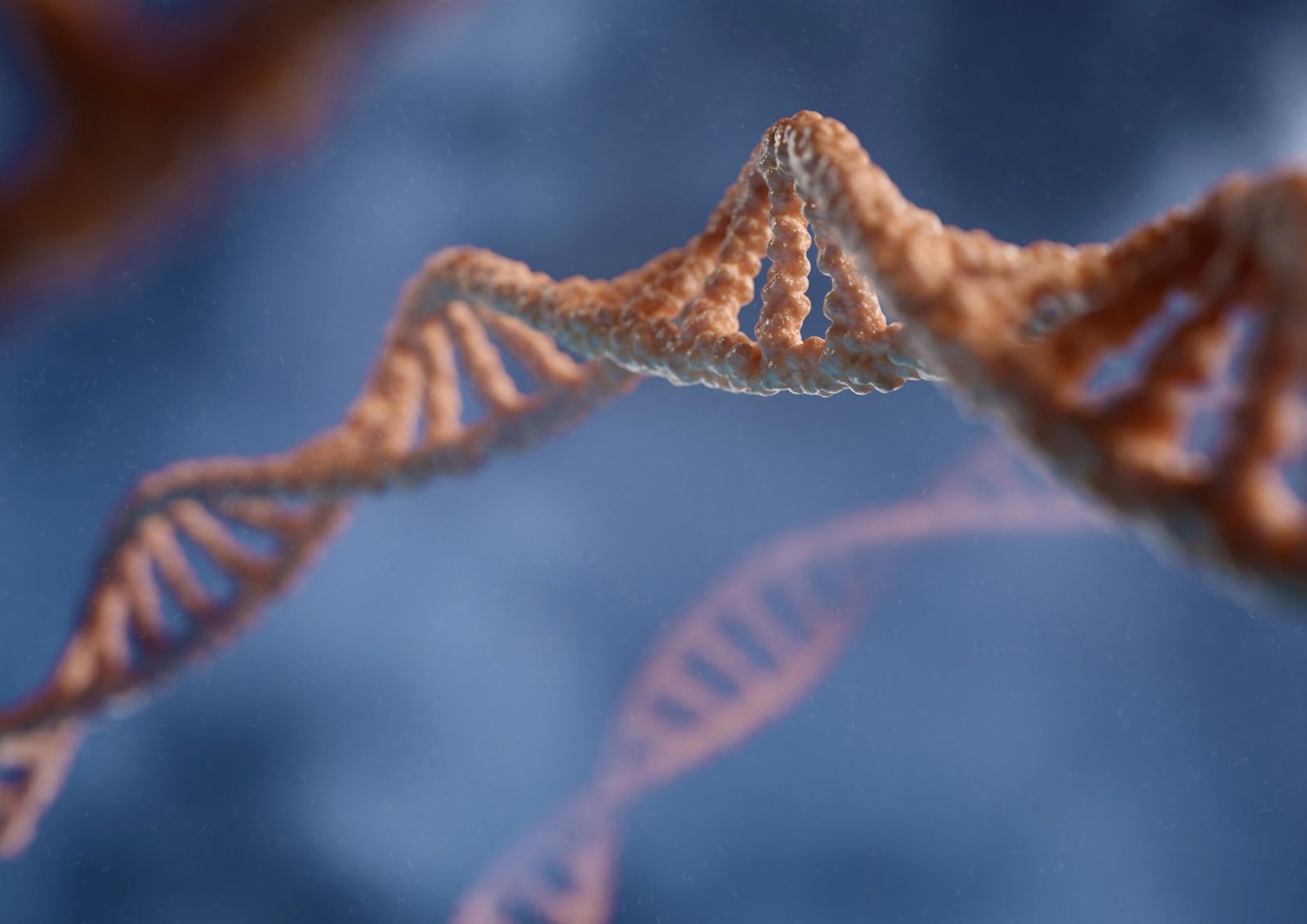Introduction to Real-Time PCR and Plant Stress Responses
Real-time PCR, also known as quantitative PCR (qPCR), is a cutting-edge technique employed in molecular biology to quantify gene expression levels in various organisms, including plants. This technology allows researchers to measure the accumulation of target nucleic acids during the PCR process in real-time, providing a highly sensitive approach to assess changes in gene expression. The significance of real-time PCR in studying plant stress responses cannot be overstated, particularly as global climate changes increasingly challenge agricultural stability.
In the context of plant biology, stress factors such as drought, salinity, and temperature extremes pose significant threats to crop productivity and, by extension, food security. When plants encounter stress, their gene expression profiles can alter dramatically, influencing physiological processes and adaptive mechanisms. Real-time PCR enables scientists to investigate these changes quantitatively, allowing them to identify specific genes that play a pivotal role in stress responses. This information is crucial for understanding how different plant species react to challenging environmental conditions, which can inform breeding programs aimed at developing stress-resistant varieties.
The significance of monitoring gene expression under stress conditions lies in its potential applications for modern agriculture. By utilizing real-time PCR to profile genes associated with resilience to specific stress factors, researchers can pinpoint traits that confer advantages to crops in adverse conditions. This insight could lead to the engineering of plants capable of thriving in drought-prone areas or those resistant to saline soils, ultimately contributing to improved food security in a rapidly changing climate.
Designing Real-Time PCR Experiments for Stress Response Studies
Designing a real-time PCR experiment to study plant stress responses requires careful consideration of several crucial factors to ensure accurate and reliable outcomes. First and foremost is the selection of appropriate plant species. Choosing species that exhibit known or hypothesized stress responses relevant to the research objectives is essential. Additional factors, such as the organism’s growth conditions and physiological traits, often dictate the ability to induce and measure stress responses under controlled conditions.
Next, the identification of target genes associated with specific stress responses is critical. Researchers should select genes that have been previously associated with stress-related pathways, such as those involved in drought tolerance or pathogen resistance. By focusing on a set of well-characterized genes, researchers can gain insights into the underlying molecular mechanisms at play during stress events. Exploring novel genes through genomic and transcriptomic data may also be beneficial, as emerging candidates can offer new avenues for understanding plant stress adaptation.
Another major aspect is the choice of suitable reference genes for normalization. The ideal reference genes should be stably expressed across all experimental conditions and treatments. Commonly used reference genes, such as Actin or GAPDH, may not always be appropriate during stress conditions. Thus, validating reference genes through preliminary experiments ensures that gene expression data accurately reflect the physiological state of the plants under stress.
Sample preparation also plays a vital role in the success of real-time PCR experiments. The extraction of high-quality RNA is the first step, followed by cDNA synthesis, which ensures that the template for PCR amplification is of suitable quality. By adhering to established protocols for RNA extraction and cDNA synthesis, researchers can obtain reliable gene expression data. Thus, a comprehensive approach to experimental design will contribute significantly to understanding plant stress responses through real-time PCR analysis.
Designing Real-Time PCR Experiments for Stress Response Studies
| Component | Details |
|---|---|
| 1. Objective | Identify differential gene expression under stress conditions (e.g., drought, salinity, heat, cold, pathogen attack). |
| 2. Plant Material | Select stress-tolerant and susceptible genotypes or treated vs. control plants. |
| 3. Stress Type & Treatment | Define type (abiotic or biotic), severity, duration, and method of stress application (e.g., 10% PEG for drought simulation). |
| 4. Sampling Time Points | Choose multiple time points (e.g., 0h, 3h, 6h, 12h, 24h) post-stress to capture temporal gene expression dynamics. |
| 5. Tissue Type | Select relevant tissue (e.g., leaf, root, stem) depending on stress and phenotype of interest. |
| 6. RNA Extraction | Use TRIzol or plant RNA extraction kit. Ensure RNA purity (A260/280 ~2.0) and integrity (check with gel or Bioanalyzer). |
| 7. cDNA Synthesis | Use high-quality RNA (500 ng–1 µg) with reverse transcriptase. Use random hexamers or oligo(dT) primers based on gene targets. |
| 8. Gene Selection | Target stress-responsive genes (e.g., DREB, HSPs, NAC, PR proteins) and include reference genes (e.g., Actin, EF1α, GAPDH). |
| 9. Primer Design | Design 18–25 bp primers with optimal Tm (55–60°C). Amplicon length: 80–200 bp. Validate for specificity and efficiency (90–110%). |
| 10. qPCR Reaction Setup | Use SYBR Green or probe-based master mix. Run 3 technical replicates per sample. Include no-template controls (NTCs). |
| 11. Thermal Cycling Conditions | Initial denaturation → 40 cycles of denaturation, annealing, extension. Include melt curve analysis for specificity (for SYBR Green). |
| 12. Data Analysis | Use the 2^-ΔΔCt method. Normalize the target gene Ct to the housekeeping gene Ct. Compare stressed vs. control conditions. |
| 13. Biological Replicates | Include at least 3 biological replicates per condition for statistical reliability. |
| 14. Interpretation | Correlate up- or down-regulated genes with observed phenotypic traits (e.g., wilting, growth retardation, leaf necrosis). |
| 15. Software Tools | qPCR software (e.g., Bio-Rad CFX Manager, Applied Biosystems software), Excel, or REST for relative quantification. |
Analyzing Real-Time PCR Data: Interpretation of Results
Real-time PCR, or quantitative polymerase chain reaction, serves as a powerful technique for studying gene expression in response to various stressors in plants. One of the most widely used methods for data analysis in real-time PCR is the ΔΔCt method. This approach allows researchers to quantify differences in gene expression between samples by comparing the threshold cycle (Ct) values of target genes in experimental groups to those in control conditions.
The ΔΔCt method is executed by first determining the Ct values for both the target gene and a reference gene, which is usually stably expressed across various conditions. By subtracting the Ct of the reference gene from that of the target gene, researchers obtain a ΔCt value. Subsequently, comparing ΔCt values across different treatment groups generates the ΔΔCt value. This value can then be transformed into a relative quantification of gene expression using the formula 2-ΔΔCt, which reflects changes in gene expression levels in response to the stressor being studied.
Beyond the technical calculations, it is essential to interpret these results with an eye towards biological relevance. For instance, if the analysis reveals an upregulation of stress-responsive genes, one must consider how this correlates with physiological changes observed in the plant, such as altered growth rates, changes in leaf morphology, or protracted flowering times. Statistical analysis of the data, including t-tests or ANOVA, is paramount to ascertain the significance of observed differences in gene expression. Additionally, visualizing the data through graphs can enhance comprehension, illustrating trends and facilitating communication of findings.
Ultimately, interpreting real-time PCR data extends beyond mere numerical values; it requires a synthesis of molecular data with phenotypic changes to provide insights into the adaptive mechanisms employed by plants under stress conditions. A comprehensive understanding of gene expression dynamics fosters greater knowledge of plant resilience and adaptation strategies.
Applications of Real-Time PCR in Plant Stress Research
Real-time PCR (Polymerase Chain Reaction) has revolutionized the study of gene expression, particularly in understanding how plants respond to various stressors such as drought, salinity, and extreme temperatures. One prominent application of this technology is in identifying specific gene expression patterns that correlate with stress tolerance. Researchers have utilized real-time PCR to analyze the expression levels of genes involved in stress response pathways, providing critical insights into the molecular mechanisms governing plant resilience.
A notable case study involved the examination of drought-tolerant varieties of wheat. By leveraging real-time PCR, scientists pinpointed the expression of genes related to abscisic acid synthesis, a hormone crucial for managing water stress. This research not only demonstrated the potential of these wheat varieties to withstand drought conditions but also paved the way for future breeding programs aimed at enhancing stress tolerance in crops.
Another significant study focused on the response of rice plants to salinity stress. Researchers employed real-time PCR to quantify the expression of salt-responsive genes. Their findings revealed that certain genotypes exhibited a higher expression of these genes, which correlated with increased salt tolerance. These insights have profound implications for rice cultivation in saline-prone areas, potentially guiding agricultural practices to better accommodate changing climate conditions.
Looking ahead, advancements in real-time PCR technologies, such as improved multiplexing capabilities and enhanced sensitivity, are expected to further enrich plant stress research. Future directions may focus on integrating real-time PCR with other high-throughput methodologies, such as next-generation sequencing, to offer a more comprehensive understanding of plant responses at the genome-wide level. Such integrative approaches could vastly improve the efficiency of developing stress-resistant crop varieties, ultimately supporting global food security in the face of environmental challenges.



